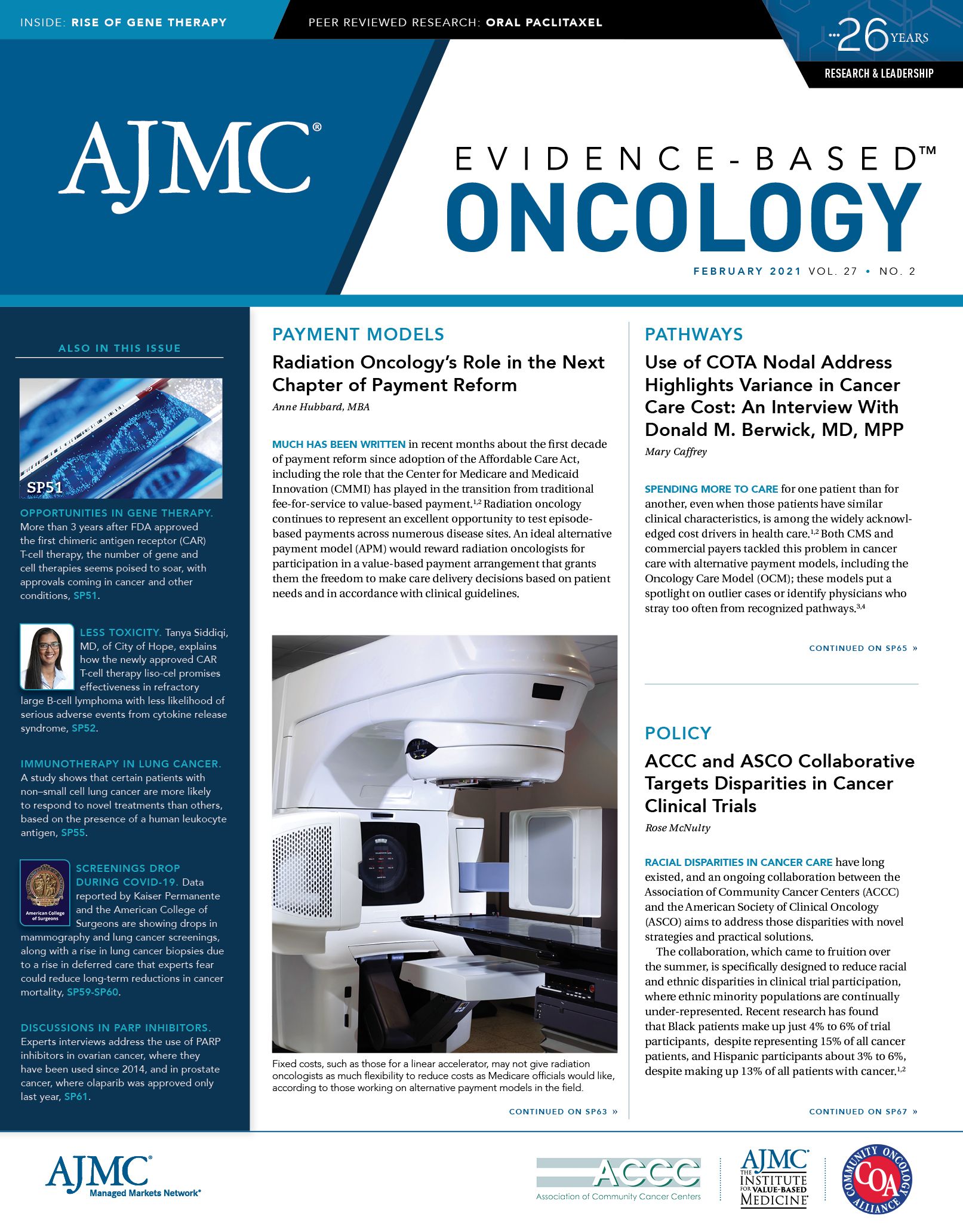- Center on Health Equity & Access
- Clinical
- Health Care Cost
- Health Care Delivery
- Insurance
- Policy
- Technology
- Value-Based Care
Lung Cancer Screenings Fall, Biopsy Rates Rise During COVID-19
Deferred low-dose computed tomography lung cancer screening during the coronavirus disease 2019 (COVID-19) pandemic has worsened outcomes for patients with lung cancer, a new study found.
Lung cancer screenings are critical for early detection and timely treatment, but the coronavirus disease 2019 (COVID-19) pandemic has made keeping up with routine care, including screenings, more difficult. A study published as an article in press by the Journal of the American College of Surgeons found that deferred care in the spring of 2020 as the COVID-19 pandemic first surged has worsened outcomes for patients with lung cancer.1
LDCT screening reduces lung cancer mortality by at least 20% in high-risk patients, and the current United States Preventive Services Task Force guidelines recommend low-dose computed tomography (LDCT) screening for adults aged 55 to 80 years, a 30 pack-year smoking history, and currently smoking or those who quit within the last 15 years.
Researchers from the University of Cincinnati aimed to gauge the impact of deferred LDCT due to the unprecedented shutdown caused by the pandemic. They suspended screenings on March 13 and started a phased reopening on May 5, fully opening on June 1. They compared the monthly screening visits during March 2020 to July 2020 to those in the 3 years prior (January 2017-February 2020).
“We had 800 scans cancelled during that time and even during the resumed period, we had a decreased total volume of patients scanned and also noted a decreased number of new patients who were scanned for their lung cancer screening,” lead author Robert M. Van Haren, MD, MSPH, FACS, assistant professor and thoracic surgeon at the University of Cincinnati College of Medicine, said in a statement.2
In all, 800 screening visits were canceled in that time frame, with total monthly visits dropping from an average of 146 to an average of 39. There were just 17 new patient visits for LDCT screening monthly on average during the pandemic, versus 56 at baseline. Even once the institution was back at full operations, the rates remained reduced.
“When we resumed our operations, we found that new patients were less likely to come back to our screening program,” Van Haren said. “…We also found that patients were more likely not to show up for their CT appointments, and this rate was again significantly increased compared with baseline.” The no-show rate rose from 15% before the pandemic to 40% after restrictions were implemented.
Once the clinic reopened, the percentage of patients who had potentially malignant nodules on their lungs after screening was higher (8% vs 29%, respectively). Therefore, more patients were referred to specialists for either biopsies or surgery during that time.
“Our results are important and suggest that it’s critical to continue cancer screening operations, such as our lung cancer screening, during this pandemic,” Van Haren said. “It’s maybe more important now as we continue to undergo another surge of COVID-19 cases throughout the country.”
To ensure screening is safe, even during the pandemic, the site of care was changed from an in-hospital setting to an outpatient center, social distancing protocol was implemented in waiting areas and scanning rooms, and appointments were spaced out further to allow for cleaning between patients. Clinicians also put an emphasis on educating patients to reinforce the message that it is safe to go for screenings during this time, Van Haren said.
“We have to make sure as health care providers that we’re taking care of patients who have COVID-19 and along with the rest of the population who don’t have COVID-19,” Van Haren said, “and that those 2 patient populations can safely co-exist and receive treatment.”
References
1. Van Haren RM, Delman AM, Turner KM. Impact of the COVID-19 pandemic on lung cancer screening program and subsequent lung cancer. J Am Coll Surg. Published online December 17, 2020. doi:10.1016/j.jamcollsurg.2020.12.002
2. Study reports drop in lung cancer screening, rise in malignancy rates during spring COVID-19 surge. News release. American College of Surgeons. December 17, 2020. Accessed December 18, 2020. https://www.newswise.com/articles/study-reports-drop-in-lung-cancer-screening-rise-in-malignancy-rates-during-spring-covid-19-surge

Insufficient Data, Disparities Plague Lung Cancer Risk Factor Documentation
September 24th 2023On this episode of Managed Care Cast, we speak with the senior author of a study published in the September 2023 issue of The American Journal of Managed Care® on the importance of adequate and effective lung cancer risk factor documentation to determine a patient's eligibility for screening.
Listen
